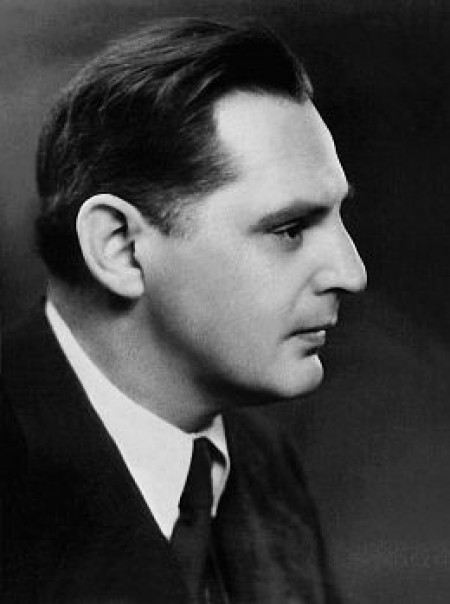
13 April 1892, Budapest – 3 December 1953, Iowa
Imre Waldbauer's name was preserved by music history primarily because of the string quartet which was named after him and Jenő Kerpely although besides his work of epochal significance as the leader of the quartet his pedagogic activity is also equally important. The first teacher of the violinist, born in 1892 was his father József Waldbauer who immigrated to Budapest from Austria and was a member of the legendary Hubay–Popper quartet. A characteristic of the rich musical background of the family is that Imre Waldbauer joined home music-making early and led a string quartet at age 13. He studied at the master school of Jenő Hubay at the Academy of Music. He established his string quartet with Jenő Kerpely in 1909 which made its debut in March of 1910, premiering the first string quartets of Bartók and Kodály.
The roots of Waldbauer's musicality date back to the school of Joachim. Besides the permanent cultivation of contemporary Hungarian repertoire the music of the Viennese Classics and Brahms were at the centre of his artistry. Although he subordinated his solo career to his quartet's professional progress, he occasionally performed independently from the quartet: at the premiere of the Second Sonata of Bartók, he performed the violin part with the composer at the piano and also gave recitals of Classical sonatas with Bartók.
He taught violin and chamber music at the Academy of Music from 1928 (his expertise certainly became quartet playing). Although he worked simultaneously with colleagues of great prestige and impact in both of his subjects, his teaching differed entirely from theirs, providing equal alternative for the students. Jenő Hubay, as an instinctive artist and pedagogue could be ideal master for the genial, natural talents. Waldbauer belonged to a lot more conscious type as his musicality and suggestive personality was associated with an unparalleled intellect. He was interested in the physiology and anatomy of violin playing, as well, and was able to illuminate every element of violin performance by words. He also directed the instrumentally less capable students to the right path. He taught wisely introduced his students to the secrets of thinking about the instrument, as well. While the chamber music instruction of Weiner was characterized by elaboration of the details and meticulous workshop, Waldbauer's intention was to show basic character and essence of the pieces and after drafting the main lines, he allotted the elaboration of the details to the student. According to the words of Sándor Végh, Weiner taught the microcosms of music, Waldbauer opened his students' approach to the macrocosms. ‘He gave the skeleton of the work the meat must have been formulated by the student himself onto it.' As a leader of his quartet and a professor of quartet playing, his greatness lied in his exceptionally refined demand for sound: he pointed out that the sound material is tightly related to the style; and an early work from Beethoven in a certain case requires a different tone than a late Beethoven opus.
Many of his students became world famous string players or conductors who gained viaticum at his chamber music lessons for a lifetime: from Loránd Fenyves to Vilmos Tátrai and Dénes Zsigmondy, from András Mihály to György Solti. Besides his output as a performer and pedagogue his theoretical work is also notable: he dealt with the history of violin playing and violin building and was a co-worker for the lexicon of Bence Szabolcsi published in 1930.
Waldbauer moved to the United States in 1946 and became a professor of violin at the University of Iowa City. The sunset of his life is eerily reminiscent for the fate of that Hungarian composer for the familiarization of whose works he made so much effort: similarly to Bartók, he also lost the fertile domestic ground and getting into almost a vacuum in the New World, received a welcome, unworthy to his intellectual rank. He died on December 3rd, 1953 in Iowa..
F. Z.


